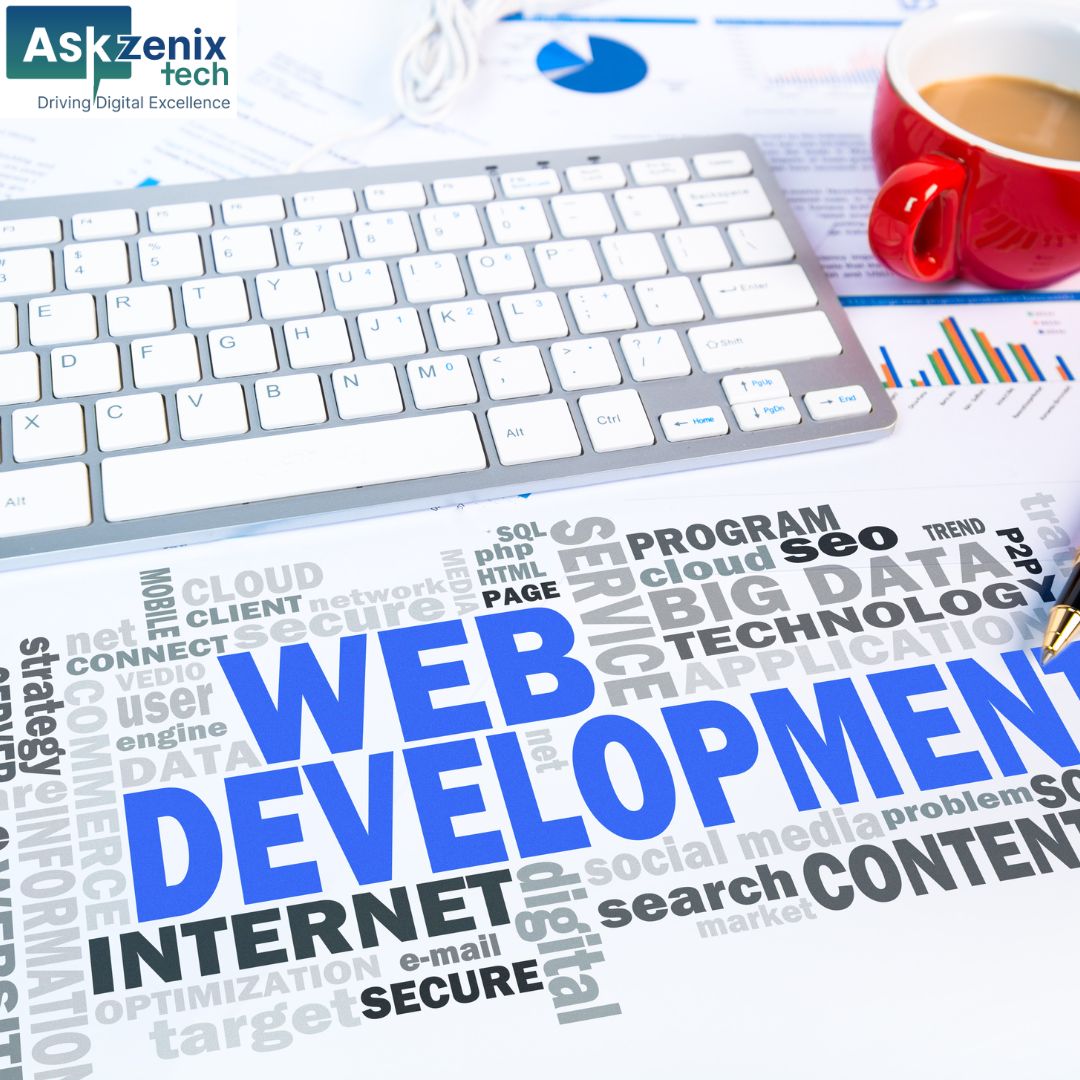Microservices Architecture with PHP: Is It a Smart Move for Modern Web Projects?
In the ever-evolving world of web development, microservices architecture has emerged as a front-runner in modern project design. While languages like Node.js and Go often dominate the microservices narrative, many developers ask — "Can PHP truly support a microservices architecture?" The answer might surprise you.
PHP, long known for powering content management systems and monolithic web apps, has matured significantly. With modern frameworks, improved performance, and enhanced language features (like PHP 8's JIT compiler), PHP is now a viable candidate for building microservices-based systems. So, let’s explore whether PHP can truly stand tall in the microservices arena — and if it's a smart move for your next project.
Understanding Microservices Architecture
Microservices vs Monolithic Architecture
In a monolithic architecture, your application is built as a single, unified codebase where all features are interconnected. Think of it like a giant block — if one part breaks, the entire system may crash.
In contrast, microservices architecture breaks the application down into small, independent services. Each service is responsible for a specific business capability and can be developed, deployed, and scaled independently.
Key Principles of Microservices
-
Decentralization: Services manage their own databases and business logic.
- Scalability: You can scale individual services based on demand, instead of the whole application.
- Service Autonomy: Teams can build and deploy services independently without affecting others.
Can PHP Handle Microservices?
Misconceptions Around PHP and Microservices
There’s a myth that PHP is only suitable for simple or monolithic websites. That was true a decade ago, but in 2025, PHP has evolved into a full-fledged backend powerhouse.
With proper architecture, PHP can communicate over HTTP/REST, consume APIs, manage queues, and run as independent, stateless services.
PHP’s Evolution into Modern Development
PHP 8.x introduced significant improvements:
- JIT compiler for better runtime performance
- Attributes for cleaner code annotation
- Improved typing for stricter and safer code
These make PHP suitable for building lightweight, isolated services in a microservices setup.
Popular PHP Frameworks Supporting Microservices
-
Laravel + Lumen: Laravel’s micro-framework, Lumen, is built specifically for microservices — offering blazing-fast performance with Laravel's elegance.
- Symfony: Ideal for building reusable components with modular design.
- Slim PHP: Lightweight and perfect for RESTful APIs in microservice layers.
Advantages of Using PHP for Microservices
Lightweight Services with Fast Boot Times
PHP’s stateless nature makes it ideal for microservices. Each request is independent — ideal for containerized environments like Docker.
Broad Community and Tooling Support
PHP has a massive community. That means:
- Ready-to-use packages
- Plenty of open-source integrations
- Ongoing support and evolution
Cost-Effectiveness and Developer Availability
PHP developers are widely available, making it easier (and more affordable) to scale teams or find microservices specialists.
Flexible Deployment Options
PHP services can be deployed on almost any server, cloud, or container platform — including AWS Lambda, Google Cloud Run, and Azure Functions.
Real-World Use Cases of PHP in Microservices
Ecommerce Platforms Using PHP Microservices
Modern ecommerce sites break down services like:
- Product catalog
- Inventory
- Payments
- User accounts
PHP fits well into these independent modules, especially with Magento and Laravel-based systems.
Media Portals and News Aggregators
These platforms often separate:
- Article processing
- User management
- Search indexing
- Ad rendering
PHP can efficiently power one or more of these services independently.
SaaS Applications with Modular Design
CRM, HRMS, and project management tools increasingly use modular microservices. PHP’s flexibility allows building these modules rapidly and independently.
Challenges and Considerations
Managing Inter-Service Communication
Services need to talk to each other — REST APIs or message brokers (like RabbitMQ) are often used, but improper configuration can cause delays or failures.
Maintaining Codebase Consistency
Different teams may use different PHP versions or libraries — leading to inconsistency. Enforce coding standards and versioning across teams.
Monitoring and Debugging Distributed Services
Debugging microservices isn’t like monoliths. Use centralized logging tools like ELK Stack or Graylog for visibility.
Performance Optimization Tips
-
Use OPCache with PHP 8+
- Minimize dependencies
- Avoid overusing synchronous API calls between services
Best Practices for PHP Microservices Architecture
Use RESTful APIs and Message Queues
RESTful APIs are perfect for synchronous communication. For asynchronous operations, use RabbitMQ, Kafka, or Redis Pub/Sub.
Adopt Containerization with Docker
Each service should live in its own Docker container for easy deployment, scalability, and isolation.
Centralized Logging and Monitoring
Tools like:
- Prometheus + Grafana for monitoring
- ELK Stack for logs
- Sentry for real-time error tracking
Ensure visibility across all services.
Security Measures for Service Communication
-
Use HTTPS and TLS for all API communication.
- Implement API gateways for authentication.
- Apply role-based access control within services.
Tools and Technologies That Complement PHP Microservices
-
Docker: Package and run services independently.
- Kubernetes: Orchestrate deployment and scaling of services.
- CI/CD Pipelines: Automate testing and deployments with Jenkins, GitHub Actions, or GitLab CI.
- RabbitMQ / Kafka: Event-driven communication between services.
- API Gateways: Use tools like Kong or NGINX for routing and securing requests.
Is PHP the Right Fit for Your Microservices-Based Project?
Factors to Consider
-
Team familiarity with PHP
- Legacy codebase reuse
- Hosting and infrastructure compatibility
- Integration needs (e.g., API-heavy apps)
When to Use PHP
-
You have an existing PHP monolith to refactor
- Your team already uses Laravel, Symfony, or Lumen
- Budget and time constraints matter
When to Avoid PHP
-
When ultra-low latency is critical (e.g., high-frequency trading apps)
- If real-time event streaming is the core functionality
Future of PHP in the Microservices Era
PHP 8+ and JIT Compilation
PHP 8.x brought massive performance improvements via JIT — bringing it closer to traditionally faster languages like Go and JavaScript.
Trends Supporting PHP in Cloud-Native Applications
-
Serverless PHP via Bref or AWS Lambda
- API-first development models
- Rise of Laravel Vapor for PHP deployment in serverless environments
Conclusion
So, is PHP a smart move for microservices? The answer is yes — but with a thoughtful approach.
PHP has proven itself capable of powering microservices, thanks to modern frameworks, lightweight services, Docker support, and a massive developer ecosystem. For businesses already invested in PHP or looking for rapid development at a low cost, it’s a strong contender.
But, like all technologies, it’s not a one-size-fits-all. Evaluate your project needs, infrastructure, and long-term scalability before making the jump.
In 2025 and beyond, with tools like Laravel Lumen, Symfony, and container orchestration platforms, PHP is not just relevant — it's ready for the microservices revolution.
FAQs
Q1: Is PHP good for microservices architecture in 2025?
Yes. With PHP 8.x, frameworks like Lumen and Symfony, and Docker/Kubernetes support, PHP is a strong option for microservices.
Q2: What are some alternatives to PHP for microservices?
Node.js, Go, Java, Python, and Rust are other popular choices, depending on performance and concurrency needs.
Q3: Can I migrate my monolithic PHP app to microservices?
Absolutely. Start by identifying business functions, building APIs, and gradually refactoring into independent services.
Q4: Is Laravel suitable for microservices?
Laravel can work, but Lumen (Laravel's lightweight version) is better suited for microservice use due to faster boot times.
Q5: What tools help monitor PHP microservices?
Prometheus, Grafana, ELK Stack, and New Relic are commonly used to monitor, log, and trace PHP-based services.
Ready to Modernize Your PHP Application?
Partner with a team that knows how to turn monolithic PHP systems into scalable microservice architectures using industry best practices. Whether you're building from scratch or migrating legacy systems, Askzenix Technologies provides best PHP development services. Contact us today to discuss your microservices transformation!
Email: info@askzenixtechnologies.com
Call : +91 99995 68773





